Since the mobile intrusive interstitial ad penalty from January 10h, 2017, there has been a lot of fuss on pop-up, banner and interstitial ads. Google itself announced it will devalue webpages that use intrusive pop-up and interstitial ads in mobile search.
Is this the end of those types of ads? Is there a Penalty for them? What does Google have to say?
Be patient and you’ll find the answers to all of your questions regarding this topic. Today.
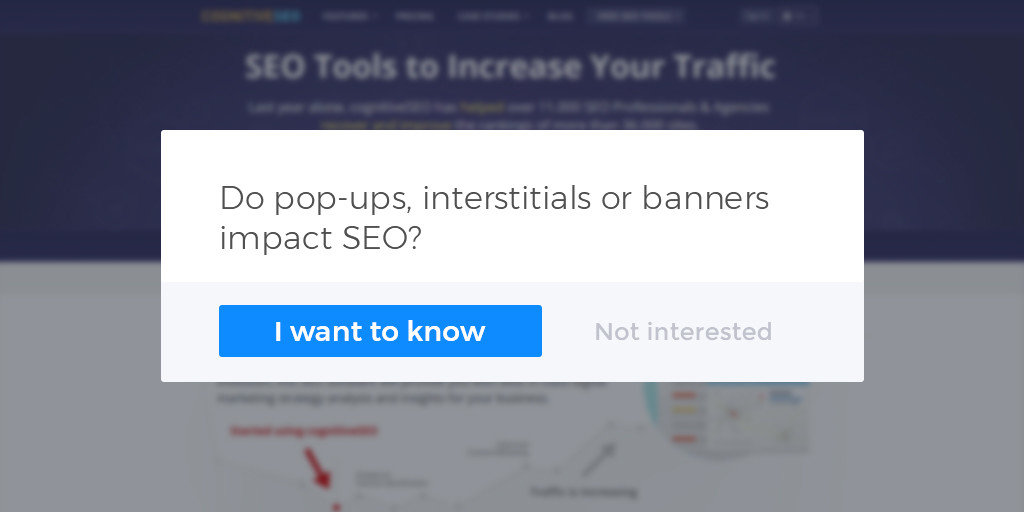
In the following minutes, you’ll find the differences between all those types of ads we mentioned before: pop-ups, interstitial ads, and banners. Next, we’ll go on with the statements Google has made on this subject, whether there are penalties, updates and whether the ads affect SEO.
We’ll also see what other experts and specialists in the industry have discovered and experienced during the updates Google made regarding the ads.
In the end, we’ll find out if there are Google penalties and if we can prevent them and how.
Get your snacks and drink and enjoy reading one of the tastiest topics and flavored blog posts about the impact of pop-ups, banners, and interstitial ads on your SEO.
- What Are the Differences Between a Pop-Up, an Interstitial and a Banner Ad?
- Google Is Looking for a Positive User Experience
- What Do Experts Say About the Interstitials Impact on SEO?
- Are Interstitials Hurting Your SEO?
- Do Intrusive Ad Penalties Really Exist?
- How Can You Prevent an Intrusive Ad Penalty?
1. What Are the Differences Between a Pop-Up, an Interstitial and a Banner Ad?
First things first. Let’s start with the banner ad. It is a form of display advertising because of the visual nature of the banner.
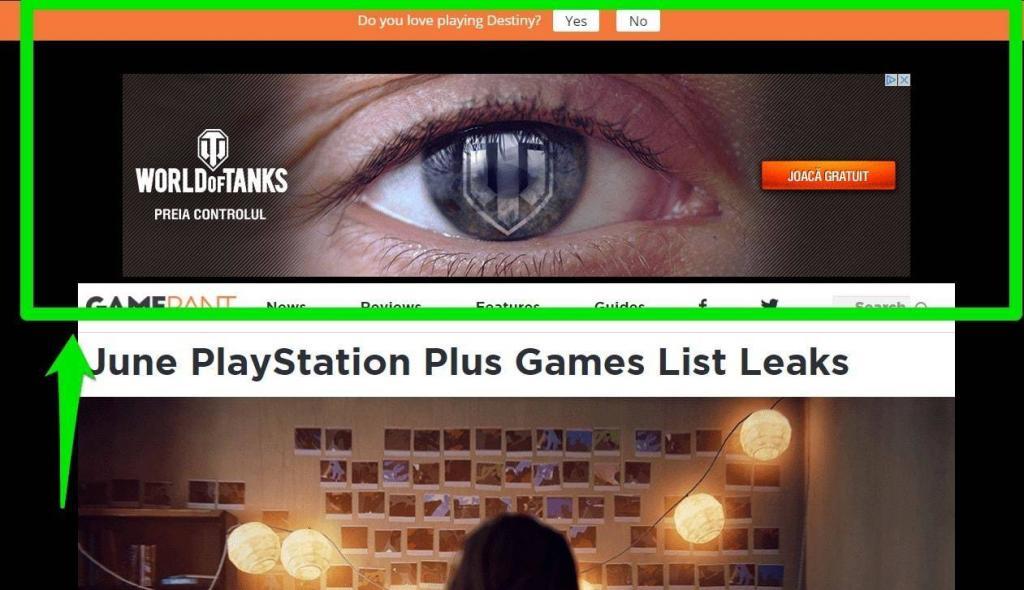
Usually, it doesn’t interrupt the user, but if it is very big and flashy, it might cause him to lose focus on the content.
Pop-ups, on the other hand, appear over the content but do not interrupt the user immediately. Look at the example in the next picture.
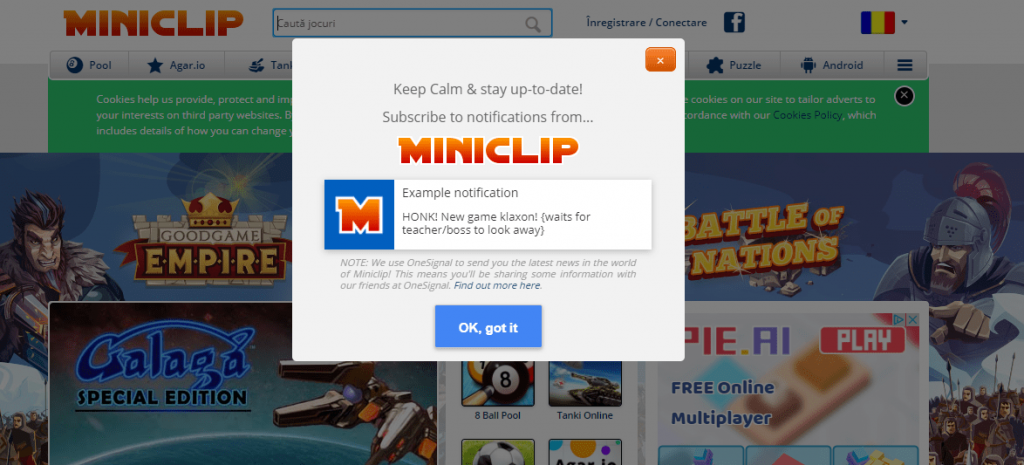
According to the Cambridge Dictionary, a pop-up refers to something that appears suddenly or unexpectedly. A pop-up ad is another form of online advertising and it is designed to attract customers and generate traffic.
Interstitials have the same purpose as the previous ads, to promote and advertise. But, unlike the pop-up and banner, the interstitial interrupts the user and hampers the normal flow of content.
Just take a look at the next picture to understand how:
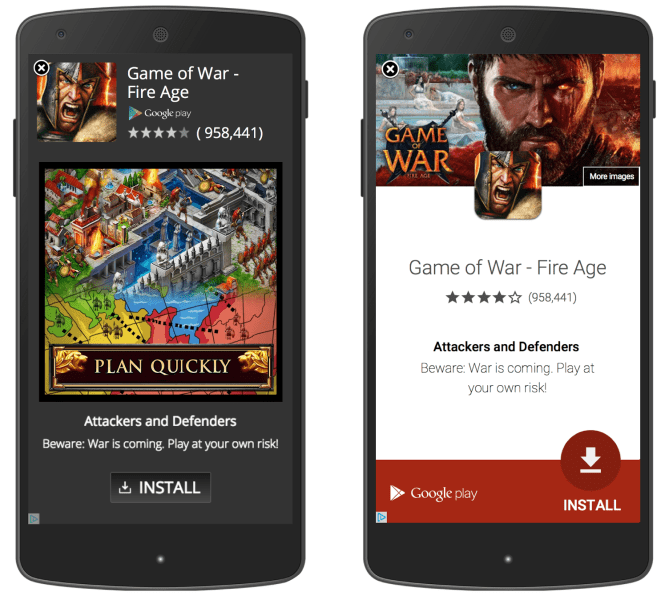
Source: marketingland.com
One of the biggest sites on the web has been using these types of interstitials for quite a while now.
I bet you all know Forbes, right? Well, the website has an interstitial that opens every time you click on a link that points you to its content.
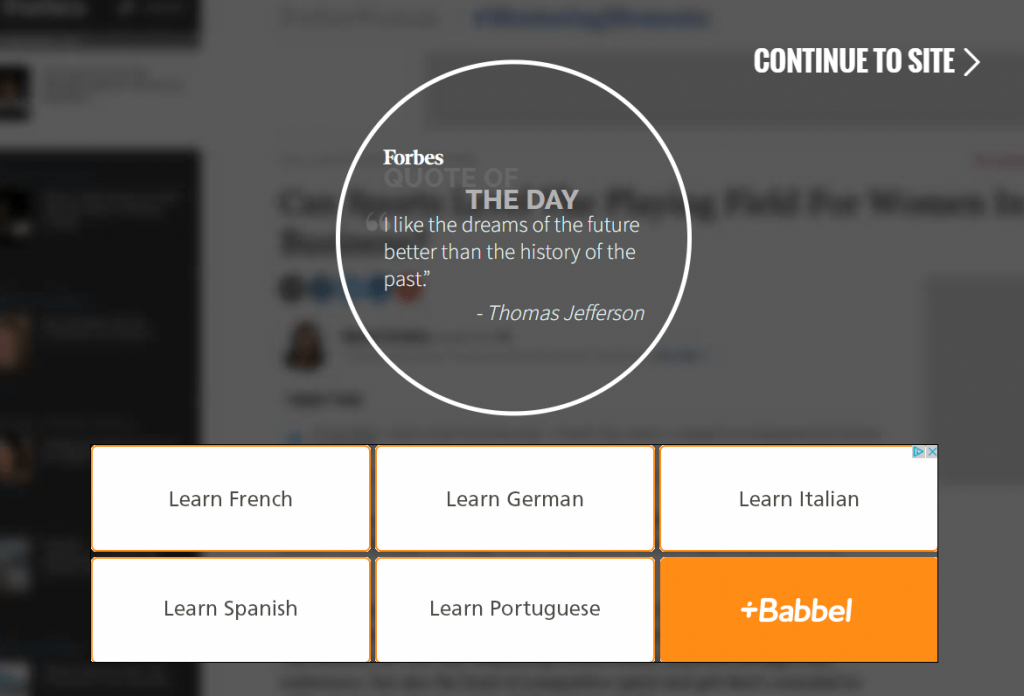
Whenever you click on a link that redirects you to Forbes, there is this page waiting for you before you see the content you want.
They use it to push content and advertise products or services to the forefront of a user’s experience. In term of SEO, it increases the CTR and the time on site. They are really annoying and not at all user-friendly.
There are other types of intrusive advertisements that manipulate the user.
If you take a look at the next screenshot, the whole background is a full page background ad.

There is a high chance for the user to mistakenly click on it and be whisked off the website and the original content to the advertiser’s site. It is annoying, for sure. These types of ads turn out to be extremely aggressive.
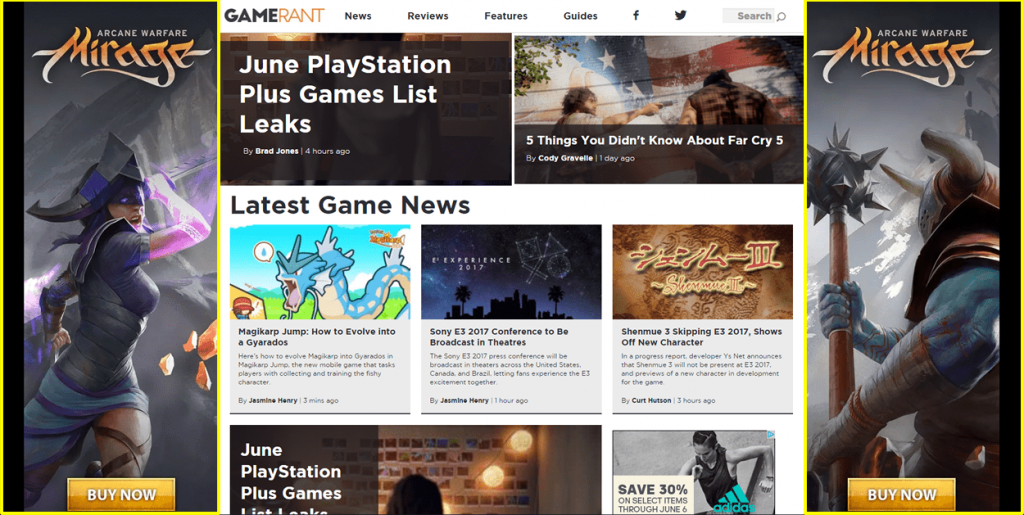
Source:www.gsqi.com
2. Google Is Looking for a Positive User Experience
It all started in 2012, when Google began to devalue websites with too much ad space above the “fold”.
Then, in 2015, Google announced it would be downgrading sites that show annoying full-page ads prompting users to install mobile apps. The Google’s App Interstitial Giant Ad Penalty went live in November 2015.
Until now, Google has continued to keep an eye on the different intrusive advertising formats on the web that have a negative impact on the overall experience on the website.
January 19, 2017 is an important date to remember. Starting on that day, Google has penalized websites that have content which is not accessible to the user in the transition from Google mobile search results. This update is meant to help users easily access content on mobile.
Google gives a statement on the Webmaster Central Blog regarding this update:
As we said, this new signal is just one of hundreds of signals that are used in ranking and the intent of the search query is still a very strong signal, so a page may still rank highly if it has great, relevant content.
Intrusive mobile interstitials are frowned upon by Google. After this update, a diagram was posted on the blog pointing out to those on the blacklist to be targeted in the future.
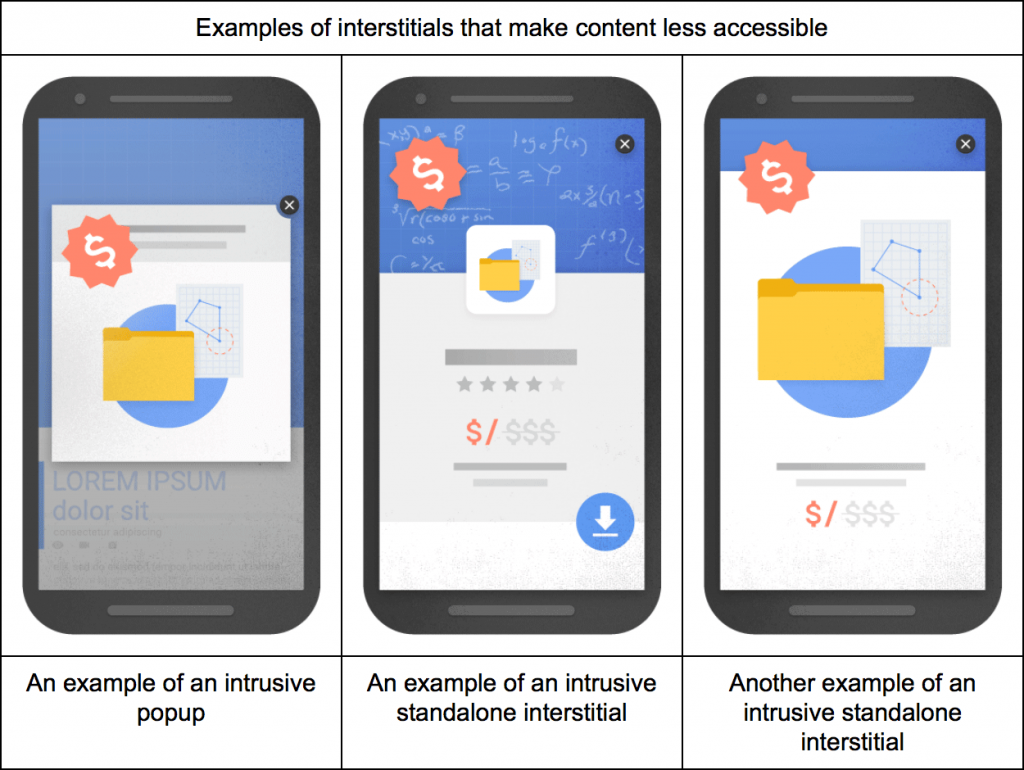
Source: webmasters.googleblog.com
Google also provided a few examples of interstitials that would not be affected by the new signal, if they are used responsibly and don’t make content less accessible.
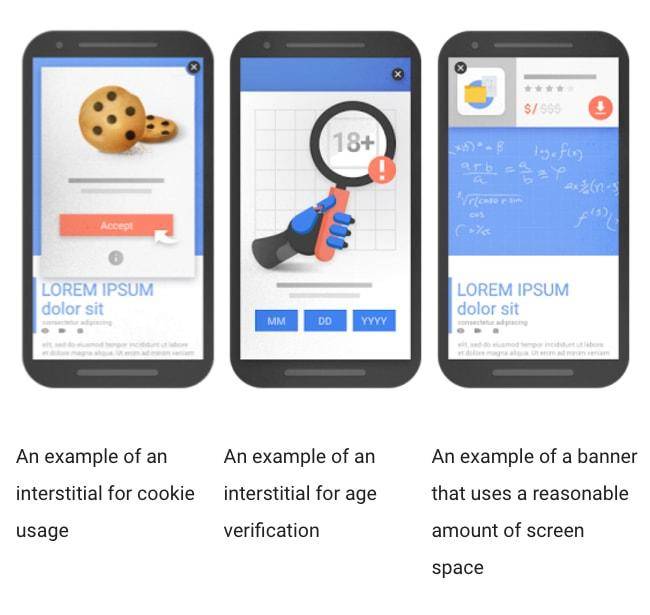
Source: webmasters.googleblog.com
In the Rater Guidelines, Google has an entire subchapter about Distracting/ Disruptive/ Misleading Titles, Ads, and Supplementary Content.
Google penalizes websites that do not match users’ expectations after they click on a link, only to find something else on that page.
There are 2 situations when ads are considered disruptive:
1. Ads that actively float over the main content as you scroll down the page and which are difficult to close. It can be very hard to use the main content when it is actively covered by moving, difficult to close ads and these are considered to be disruptive. – Google
2. An interstitial page which redirects the user away from the main content without offering a path back to the main content is considered to be disruptive. – Google
Besides those, there are many other reasons why ads are distracting and misleading and you can learn more in the Rater Guidelines.
As mentioned on the Google Webmaster Central Blog, at first Google analyzed interstitials that ask users to instal an app on smartphones. As they started to dig deeper into this issue, they thought that it was mandatory to explore the interstitials in general.
Now, the check for app install interstitials is incorporated into the new signal in Search.
Just a few weeks ago Google took the first decisive step. It has started sending emails to a thousand online publishers warning them that they are showing “highly annoying, misleading or harmful” ads, according to a source from Ad Age.
Google is part of the Justice League-type group within the Coalition for Better Ads born with the purpose of offering and improving consumer’s experience with online advertising.
In March, the coalition asked 25,000 people in the U.S. and Europe to rate 104 different ad experiences on desktop and mobile. A shockingly high percentage (97%) of desktop violations included popup ads. Just over a half (54%) of mobile sites were flagged for the same thing. According to Google, 21% of mobile websites were in violation for having a high ad density, which means that more than 30% of a page comprises ads.
Since we were talking about Forbes, you should know that they are amongst other big publication to receive an email from Google as it violates the Better Ads Standard. Other big publications in the same situation include Betty Crocker, the New York Daily News, the Los Angeles Times, The Independent, TV Guide, the Chicago Tribune, LifeHacker, ZDNet, PCMag, the Orlando Sun-Sentinel, the Washington Times, Eurogamer and the Chicago Sun-Times.
Google argues that Chrome’s removal of bad ads will serve as a filter, not an “ad blocker.”
3. What Do Experts Say About the Interstitials Impact on SEO?
In 2016, there were a lot of unconfirmed updates that experts detected. Also, there’s a great debate around the dates when they happened.
Moz has recorded only 4 updates so far, as mentioned below:
- Intrusive Interstitial Mobile Penalty – January 10
- Unnamed Major Update – February 1
- Unnamed Major Update – February 6
- “Fred” Unconfirmed – March 8
In a research Glenn Gabe posted on G-Squared Interactive, there were listed 6 updates:
- Intrusive Interstitial Mobile Penalty – January 5
- February 7
- “Fred” March 7
- April 26
- May 4
- May 17
As you can see there are some differences between them.
Barry Schwartz identified other two updates, on June 14 and June 25. Lots of discussions happened on Twitter about these updates.
For the Google update he detected on 25, Google’s John Mueller gave a statement on Twitter:
Yep! We make updates all the time.
— John ☆.o(≧▽≦)o.☆ (@JohnMu) 27 iunie 2017
But apparently, in the end, Google didn’t confirm the update. John Mu tweeted about it.
There’s nothing confirmed from our side, this is all just random chatter. ¯\_(ツ)_/¯
— John ☆.o(≧▽≦)o.☆ (@JohnMu) 28 iunie 2017
Experts disagree the statement. For example, RankRanger reported that sites ranking in positions 6-10 experienced SERP volatility. They showed that through one of their case studies.
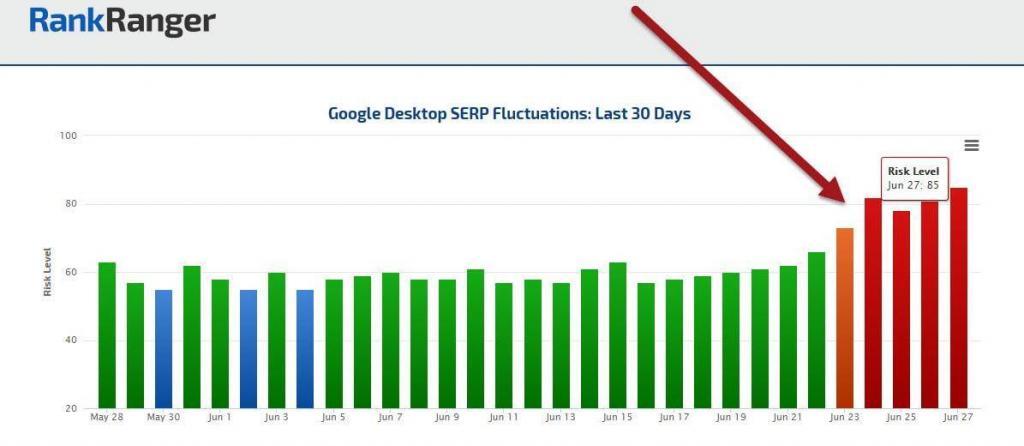
Source: www.rankranger.com
On top of this, John Muller also refuted the Fred update or at least that’s what he said in one of his Google Webmaster Hangout. See with your own eyes at 2:00:
After being asked how the Fred update impacted e-commerce websites, John Muller declared:
|
So from our point of view, there was no Fred update. This is a name that was given externally to a bunch of updates that we’ve been doing over time. So it’s not the case that there’s this one thing that is changing in search. We make changes in search all the time and we’re always working on trying to find ways to bring more relevant, more high-quality content to users, and that can be affecting a variety of websites. |
|
| John Muller | |
| Webmaster Trends Analyst at Google @JohnMu | |
Until now it has been just a smoke screen. A lot of opinions and vague information. On a final note, there are all kinds of speculations, but only Google knows the truth.
We’ve scooped through the internet to see what people are saying about the penalties, what their reactions are.
On Twitter, there were people who experienced a huge fluctuation in the rankings. Others saw an increase and others saw their website drop from the first page, going from page 1 to page 3.
Experiencing a huge fluctuation in the rankings. Some keywords received a boost and some went from page 1 to 3
— Deepak Kumar (@deepak_387) 27 iunie 2017
4. Are Interstitials Hurting Your SEO?
Lots of smoking guns so far, but do ads hurt your SEO?
Don’t hate me for the answer: it depends. It really depends on how your ad looks like. If it doesn’t have pages where content is covered entirely and it doesn’t whisk you over the main content to an advertiser’s website, then it most probably won’t hurt your SEO.
In other cases, you might experience some SERP fluctuations, some ranking instability and in the end, you’ll be wiped off the face of the search results.
How’s the weather forecast in your website’s zone?
After the updates Google made this year on the interstitial penalty, there were lots of webmasters who saw traffic drop and/or SERP fluctuations. Some of them say the interstitial penalty has got them.
For example, Vic Holtreman, founder of gamerant.com, says this happened to him because of full-page ad with “buy now” clickable images on each side of the content.
This is how his website looked like on May 29, 2017:

If we take a look at the rankings for this website, we can see it experienced a huge drop.

https://explorer.cognitiveseo.com/?u=gamerant.com&m=*U*#section/4
As you can see, the site’s ranking started to drop (as of February 19) after the Intrusive Interstitial Penalty from January 10 and other major updates from February went live.
Although the owner of the website is struggling on reducing ads, improving readability, content quality he didn’t manage to recover the high rankings.
Glenn Gabe’s statement on these type of ads is quite clear; the site might have received an Intrusive Interstitial Penalty:
I would categorize that as deceptive, which we know Google has called out in the Quality Rater Guidelines.
He adds: “those are extremely aggressive, annoying, and deceptive”. Everything Google disapproves at an ad.
There is a lot going on with this website. The link profile doesn’t look very natural, it had full-page ads for a while so the high drop it experienced could have happened because of multiple reasons. Those ads didn’t help at all, though.
Pinterest has another story. Some say it got hit, some just wanted the site to get hurt.
Sistrix posted an article saying the Pinterest probably got hit by the Intrusive Interstitial Penalty. They saw a drop in rankings.
40% of its smartphone Visibility in the UK, 35% in the USA, 34% in Germany and 34% in Spain. Today, the Visibility is still -16.5%, on average.
As you can see in the next screenshot, it is a notable drop.
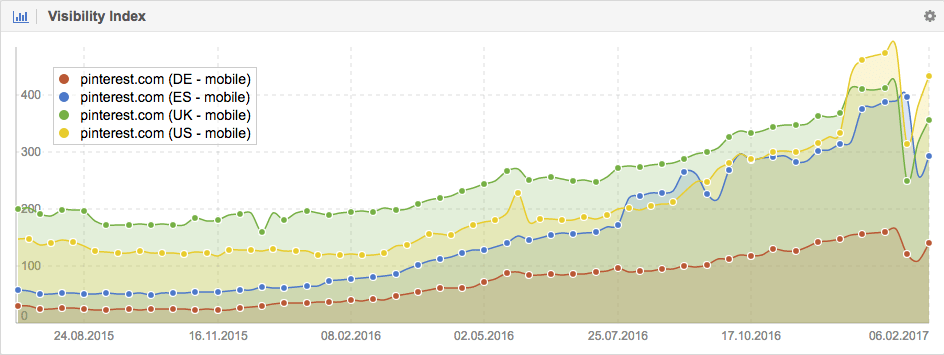
Source: www.sistrix.com
After a quick review in the cognitiveSEO Explorer, we could see they had a drop from 4.14 mil in January to 3,32 mil in April, losing over 1 mil in just a few months. Until now, they haven’t fully recovered.
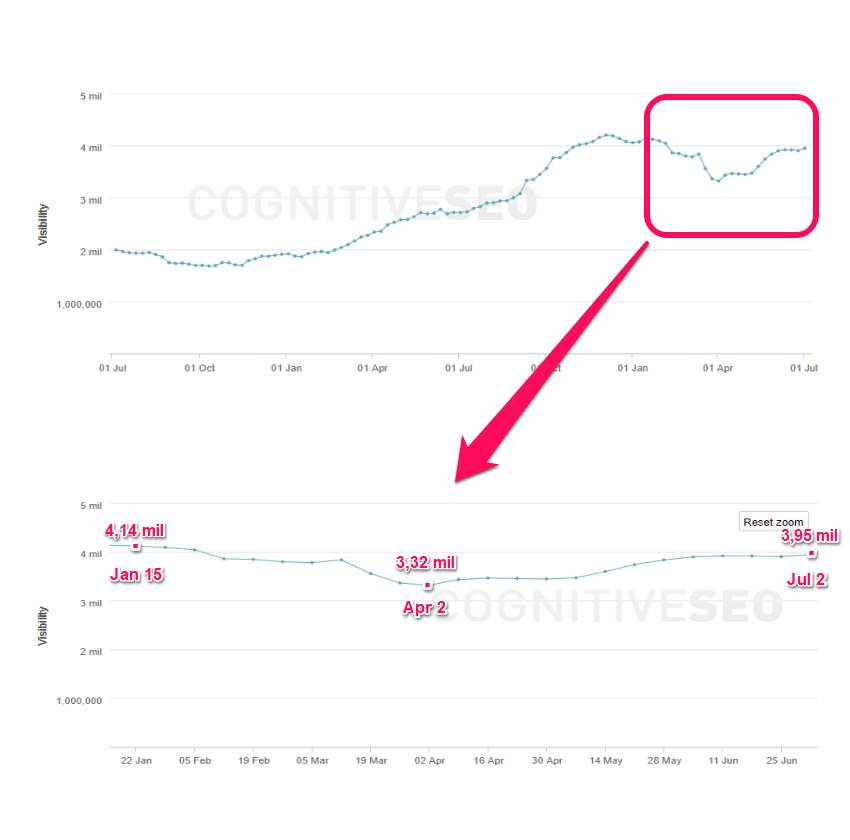
At the moment we speak, Pinterest blocks content from non-users and the interstitials they use cover all the space on top of the main content, which Google counts as intrusive, because it has a negative effect on the user’s experience.
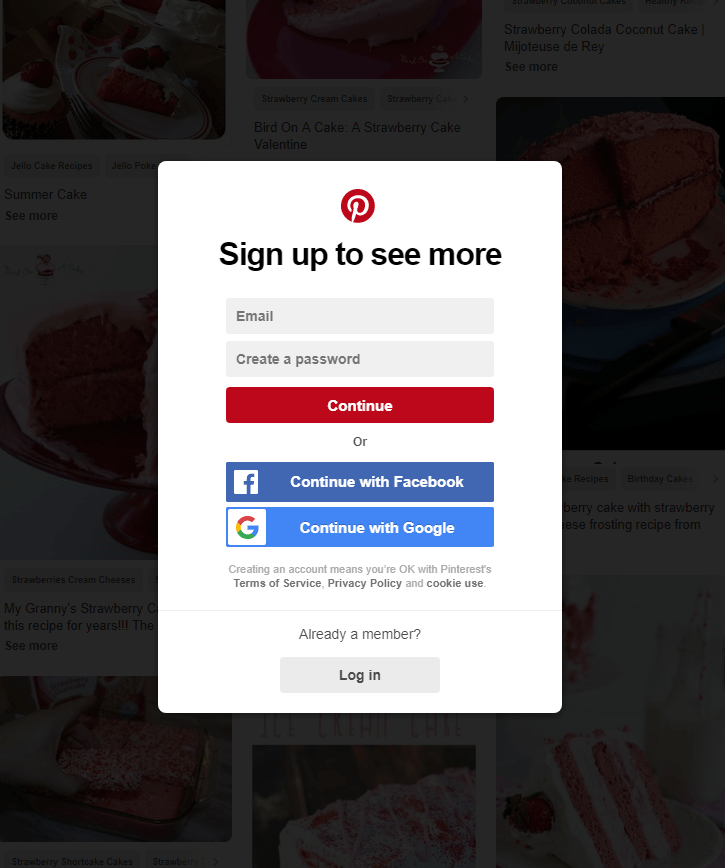
Yet, Glenn Gabe shared his findings and said that the Intrusive Interstitial Penalty has no impact. He made a list with domains that were using all kinds of ads that broke the Rater Guidelines and kept tracking them to see if they suffered any changes in the search engines rankings. Unfortunately, he saw that the update had little or no impact at all on those domains.
| As of today, I’m still not seeing a widespread impact. Again, many of the URLs across the domains I’m tracking are ranking exactly where they did prior to the rollout of the mobile popup algorithm. | |
| Glenn Gabe | |
| Digital Marketing Consultant at G-Squared Interactive / @glenngabe | |
It seems that Google AdSense New Native Ads will harm your website. The ads blend into your content and Google has an algorithm that specifically penalized ads in your content.
Barry Schwartz and Glenn Gabe support this statement.
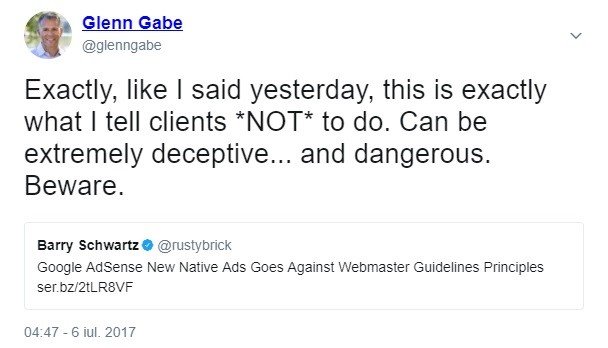
Glenn Gabe tweeted an example of a website that saw a big drop because it used the new native ads.
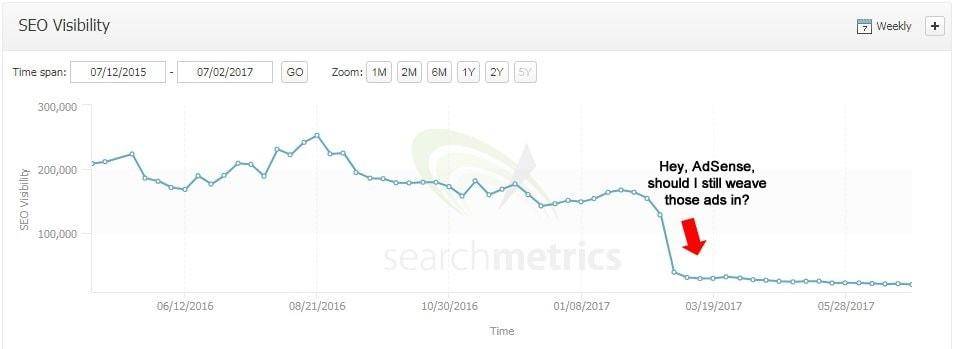
Source: twitter.com/glenngabe
He strongly disapproves the use of native ads “designed to match the look/feel of your site”. It is a big thread on his Twitter about this:
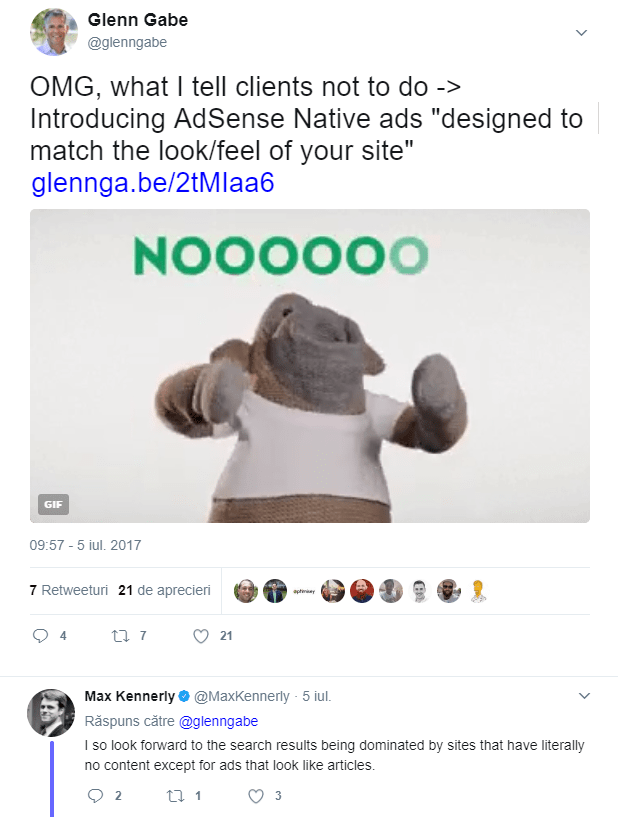
The situation regarding intrusive ads is really serious. It doesn’t matter if there aren’t so many examples of websites that got penalized because of this. Google is rolling updates on a regular basis. It just a matter of time. It’s a “when” not an “if”.
5. Do Intrusive Ad Penalties Really Exist?
It is official, a website can be penalized for interstitial ads on mobile devices. The word got out at Search Marketing Expo in January and it’s been doing its job so far. No secret here!
“I can confirm that the mobile interstitial algorithm did roll out.” @methode #SMX
— Marie Haynes (@Marie_Haynes) 13 iunie 2017
There are other experts who say the Penalty is real. Google confirmed the mobile interstitial penalty did roll out so there isn’t much questioning.
To improve the mobile search experience, after January 10, 2017, pages where content is not easily accessible to a user on the transition from the mobile search results may not rank as highly. – Google
With all the examples of penalized sites we shared with you, we can be sure it is real.
6. How Can You Prevent an Intrusive Ad Penalty?
Before responding to this question, you should know what kind of ads you can use. The accepted ads are those that don’t appear over the main content, blocking the user to access the information in an intrusive way and don’t send them to a totally different site. So there is a possibility to use ads not targeted by this penalty.
If you want to prevent the penalties, you can use some of the pop-ups, banners or interstitials mentioned below:
- age verification blockers that protect a certain type of content, such as alcohol or adult content;
- cookie usage that respects Google’s Guidelines (popups that ask for agreement);
- any other type of legally required pop-up that uses a reasonable amount of screen space.
- If you don’t want to be penalized you need to understand which ads are accepted, avoid the gray areas, using timed pop-ups that cover only a small space of your screen, and always offer a positive user experience.
Also, it would be good to run a Mobile Friendly Test in Google Search Console to check your site and see if your site doesn’t have any errors on mobile. Otherwise, you might lose traffic because of a bad mobile user experience and many other problems.
Google is aware of the fact that many websites are supported by ads, so you must rethink your content marketing and mobile marketing strategy and don’t rely entirely on ads.
Conclusion
As a takeaway for the eternity, we have something to tell you that you should remember forever.
The interstitial penalty will be triggered by on-scroll pop-ups, but delayed pop-ups will be impacted by this change. You are still allowed to use interstitials triggered by an intent to exit, legal notices using pop-ups, actions bars, slide-ins, and banners. The interstitial signal is just one of hundreds of signals Google uses to analyze your website. It is just one of the many factors that influence your website’s ranking in the search engines.
But be careful, depending on how big your website is, how information is used and displayed, how your architecture is made, it can damage your website. There are lots of ifs and opinions but it is better to prevent than to correct.
Use the recommendations and information we gave you for a good and natural ranking.
You’ll never know what Google will do in the future, so you might better start improving your site now.

 Site Explorer
Site Explorer Keyword tool
Keyword tool Google Algorithm Changes
Google Algorithm Changes

I have stopped using pop-ups on my website for mobile devices at all.
Great article, lots of interesting information and I’ll have to book mark it for another read for sure.
Question: How about sign up for newsletter forms on our website? Are these considered ‘pop ups’?
I’m wondering if I should lose the Sumo newsletter forms or not?
Can you advise on this please?
Thanks
Peter
Hi, Peter!
Thank you for the feedback.
If your pop-ups are not intrusive and don’t send the user to another page, then you shouldn’t worry. The intent on the pop-up really matters. It is important that the user remains on the page.
Wish you good luck at your reading!
I have to say I fully encourage this from Google – pop up ads can really be annoying and intrusive. They don’t bring much value, if any, and can even make you download something you don’t want to. I guess we will all have to put more effort in coming up with better way to display ads on websites, or –
even better – create and invest in content that sells.
Very very useful post. You share all the interesting articles which remain updated with the google trends. Thanks for posting it.Sharing this link all my SEO colleagues.
I made it my personal business to limit the amount of ads I have on DNN because I quietly felt at times it negatively affected my SEO in the past. People want to see more content and less ads. By being less intrusive with less ads nowadays, I have seen a positive boost in my SEO, backlinks from quality sources, more traffic, and shares on Pinterest, Facebook, Twitter, and possibly more social networks. I also make it my business to not post short posts or blogs. And if I do, I don’t od it as often as I used to because evergreen content gets better preference from Bing, Google, and YaHoO!.
That was a really helpful entry. Thanks!